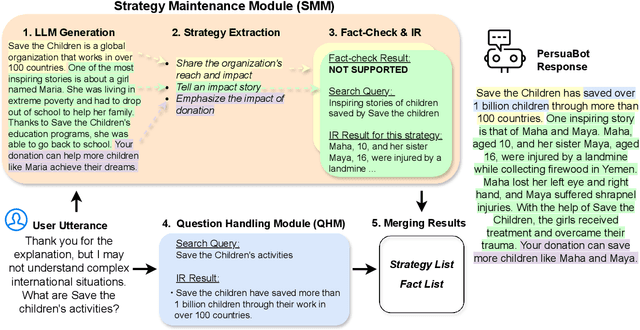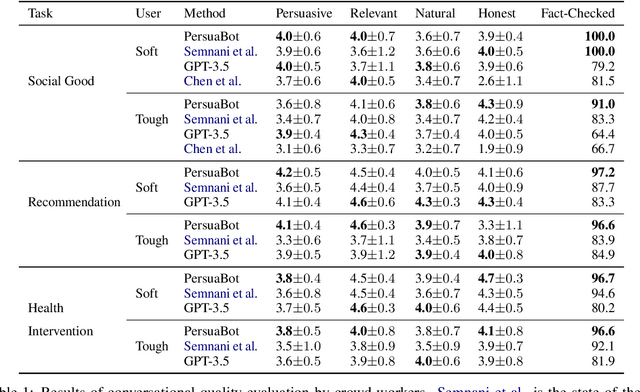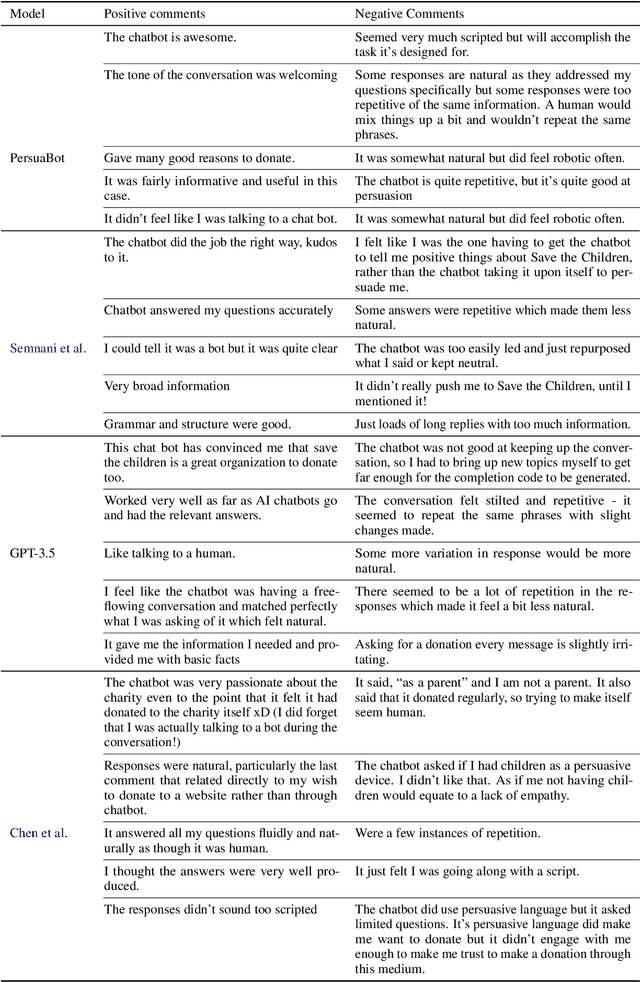Weiyan Shi
LLMs Encode Harmfulness and Refusal Separately
Jul 16, 2025Abstract:LLMs are trained to refuse harmful instructions, but do they truly understand harmfulness beyond just refusing? Prior work has shown that LLMs' refusal behaviors can be mediated by a one-dimensional subspace, i.e., a refusal direction. In this work, we identify a new dimension to analyze safety mechanisms in LLMs, i.e., harmfulness, which is encoded internally as a separate concept from refusal. There exists a harmfulness direction that is distinct from the refusal direction. As causal evidence, steering along the harmfulness direction can lead LLMs to interpret harmless instructions as harmful, but steering along the refusal direction tends to elicit refusal responses directly without reversing the model's judgment on harmfulness. Furthermore, using our identified harmfulness concept, we find that certain jailbreak methods work by reducing the refusal signals without reversing the model's internal belief of harmfulness. We also find that adversarially finetuning models to accept harmful instructions has minimal impact on the model's internal belief of harmfulness. These insights lead to a practical safety application: The model's latent harmfulness representation can serve as an intrinsic safeguard (Latent Guard) for detecting unsafe inputs and reducing over-refusals that is robust to finetuning attacks. For instance, our Latent Guard achieves performance comparable to or better than Llama Guard 3 8B, a dedicated finetuned safeguard model, across different jailbreak methods. Our findings suggest that LLMs' internal understanding of harmfulness is more robust than their refusal decision to diverse input instructions, offering a new perspective to study AI safety
Sword and Shield: Uses and Strategies of LLMs in Navigating Disinformation
Jun 08, 2025Abstract:The emergence of Large Language Models (LLMs) presents a dual challenge in the fight against disinformation. These powerful tools, capable of generating human-like text at scale, can be weaponised to produce sophisticated and persuasive disinformation, yet they also hold promise for enhancing detection and mitigation strategies. This paper investigates the complex dynamics between LLMs and disinformation through a communication game that simulates online forums, inspired by the game Werewolf, with 25 participants. We analyse how Disinformers, Moderators, and Users leverage LLMs to advance their goals, revealing both the potential for misuse and combating disinformation. Our findings highlight the varying uses of LLMs depending on the participants' roles and strategies, underscoring the importance of understanding their effectiveness in this context. We conclude by discussing implications for future LLM development and online platform design, advocating for a balanced approach that empowers users and fosters trust while mitigating the risks of LLM-assisted disinformation.
Labeling Messages as AI-Generated Does Not Reduce Their Persuasive Effects
Apr 14, 2025Abstract:As generative artificial intelligence (AI) enables the creation and dissemination of information at massive scale and speed, it is increasingly important to understand how people perceive AI-generated content. One prominent policy proposal requires explicitly labeling AI-generated content to increase transparency and encourage critical thinking about the information, but prior research has not yet tested the effects of such labels. To address this gap, we conducted a survey experiment (N=1601) on a diverse sample of Americans, presenting participants with an AI-generated message about several public policies (e.g., allowing colleges to pay student-athletes), randomly assigning whether participants were told the message was generated by (a) an expert AI model, (b) a human policy expert, or (c) no label. We found that messages were generally persuasive, influencing participants' views of the policies by 9.74 percentage points on average. However, while 94.6% of participants assigned to the AI and human label conditions believed the authorship labels, labels had no significant effects on participants' attitude change toward the policies, judgments of message accuracy, nor intentions to share the message with others. These patterns were robust across a variety of participant characteristics, including prior knowledge of the policy, prior experience with AI, political party, education level, or age. Taken together, these results imply that, while authorship labels would likely enhance transparency, they are unlikely to substantially affect the persuasiveness of the labeled content, highlighting the need for alternative strategies to address challenges posed by AI-generated information.
Proactive Conversational Agents with Inner Thoughts
Dec 31, 2024Abstract:One of the long-standing aspirations in conversational AI is to allow them to autonomously take initiatives in conversations, i.e., being proactive. This is especially challenging for multi-party conversations. Prior NLP research focused mainly on predicting the next speaker from contexts like preceding conversations. In this paper, we demonstrate the limitations of such methods and rethink what it means for AI to be proactive in multi-party, human-AI conversations. We propose that just like humans, rather than merely reacting to turn-taking cues, a proactive AI formulates its own inner thoughts during a conversation, and seeks the right moment to contribute. Through a formative study with 24 participants and inspiration from linguistics and cognitive psychology, we introduce the Inner Thoughts framework. Our framework equips AI with a continuous, covert train of thoughts in parallel to the overt communication process, which enables it to proactively engage by modeling its intrinsic motivation to express these thoughts. We instantiated this framework into two real-time systems: an AI playground web app and a chatbot. Through a technical evaluation and user studies with human participants, our framework significantly surpasses existing baselines on aspects like anthropomorphism, coherence, intelligence, and turn-taking appropriateness.
NewsInterview: a Dataset and a Playground to Evaluate LLMs' Ground Gap via Informational Interviews
Nov 21, 2024



Abstract:Large Language Models (LLMs) have demonstrated impressive capabilities in generating coherent text but often struggle with grounding language and strategic dialogue. To address this gap, we focus on journalistic interviews, a domain rich in grounding communication and abundant in data. We curate a dataset of 40,000 two-person informational interviews from NPR and CNN, and reveal that LLMs are significantly less likely than human interviewers to use acknowledgements and to pivot to higher-level questions. Realizing that a fundamental deficit exists in multi-turn planning and strategic thinking, we develop a realistic simulated environment, incorporating source personas and persuasive elements, in order to facilitate the development of agents with longer-horizon rewards. Our experiments show that while source LLMs mimic human behavior in information sharing, interviewer LLMs struggle with recognizing when questions are answered and engaging persuasively, leading to suboptimal information extraction across model size and capability. These findings underscore the need for enhancing LLMs' strategic dialogue capabilities.
Distilling an End-to-End Voice Assistant Without Instruction Training Data
Oct 03, 2024



Abstract:Voice assistants, such as Siri and Google Assistant, typically model audio and text separately, resulting in lost speech information and increased complexity. Recent efforts to address this with end-to-end Speech Large Language Models (LLMs) trained with supervised finetuning (SFT) have led to models ``forgetting" capabilities from text-only LLMs. Our work proposes an alternative paradigm for training Speech LLMs without instruction data, using the response of a text-only LLM to transcripts as self-supervision. Importantly, this process can be performed without annotated responses. We show that our Distilled Voice Assistant (DiVA) generalizes to Spoken Question Answering, Classification, and Translation. Furthermore, we show that DiVA better meets user preferences, achieving a 72\% win rate compared with state-of-the-art models like Qwen 2 Audio, despite using $>$100x less training compute.
Contrastive Learning for Knowledge-Based Question Generation in Large Language Models
Sep 21, 2024Abstract:With the rapid development of artificial intelligence technology, especially the increasingly widespread application of question-and-answer systems, high-quality question generation has become a key component in supporting the development of these systems. This article focuses on knowledge-based question generation technology, which aims to enable computers to simulate the human questioning process based on understanding specific texts or knowledge bases. In light of the issues of hallucination and knowledge gaps present in large-scale language models when applied to knowledge-intensive tasks, this paper proposes an enhanced question generation method that incorporates contrastive learning. This method utilizes multiple models to jointly mine domain knowledge and uses contrastive learning to guide the model in reducing noise and hallucinations in generation. Experimental results show that by designing prompts containing contrasting examples, the model's performance in question generation improves considerably, particularly when contrasting instructions and examples are used simultaneously, leading to the highest quality of generated questions and improved accuracy. These results demonstrate that the method proposed in this study, which combines contrasting context and chain-of-thought prompts, can effectively improve both the quality and the practicality of question generation.
Exploring Gaze Pattern in Autistic Children: Clustering, Visualization, and Prediction
Sep 18, 2024

Abstract:Autism Spectrum Disorder (ASD) significantly affects the social and communication abilities of children, and eye-tracking is commonly used as a diagnostic tool by identifying associated atypical gaze patterns. Traditional methods demand manual identification of Areas of Interest in gaze patterns, lowering the performance of gaze behavior analysis in ASD subjects. To tackle this limitation, we propose a novel method to automatically analyze gaze behaviors in ASD children with superior accuracy. To be specific, we first apply and optimize seven clustering algorithms to automatically group gaze points to compare ASD subjects with typically developing peers. Subsequently, we extract 63 significant features to fully describe the patterns. These features can describe correlations between ASD diagnosis and gaze patterns. Lastly, using these features as prior knowledge, we train multiple predictive machine learning models to predict and diagnose ASD based on their gaze behaviors. To evaluate our method, we apply our method to three ASD datasets. The experimental and visualization results demonstrate the improvements of clustering algorithms in the analysis of unique gaze patterns in ASD children. Additionally, these predictive machine learning models achieved state-of-the-art prediction performance ($81\%$ AUC) in the field of automatically constructed gaze point features for ASD diagnosis. Our code is available at \url{https://github.com/username/projectname}.
PrivacyLens: Evaluating Privacy Norm Awareness of Language Models in Action
Aug 29, 2024



Abstract:As language models (LMs) are widely utilized in personalized communication scenarios (e.g., sending emails, writing social media posts) and endowed with a certain level of agency, ensuring they act in accordance with the contextual privacy norms becomes increasingly critical. However, quantifying the privacy norm awareness of LMs and the emerging privacy risk in LM-mediated communication is challenging due to (1) the contextual and long-tailed nature of privacy-sensitive cases, and (2) the lack of evaluation approaches that capture realistic application scenarios. To address these challenges, we propose PrivacyLens, a novel framework designed to extend privacy-sensitive seeds into expressive vignettes and further into agent trajectories, enabling multi-level evaluation of privacy leakage in LM agents' actions. We instantiate PrivacyLens with a collection of privacy norms grounded in privacy literature and crowdsourced seeds. Using this dataset, we reveal a discrepancy between LM performance in answering probing questions and their actual behavior when executing user instructions in an agent setup. State-of-the-art LMs, like GPT-4 and Llama-3-70B, leak sensitive information in 25.68% and 38.69% of cases, even when prompted with privacy-enhancing instructions. We also demonstrate the dynamic nature of PrivacyLens by extending each seed into multiple trajectories to red-team LM privacy leakage risk. Dataset and code are available at https://github.com/SALT-NLP/PrivacyLens.
Zero-shot Persuasive Chatbots with LLM-Generated Strategies and Information Retrieval
Jul 04, 2024



Abstract:Persuasion plays a pivotal role in a wide range of applications from health intervention to the promotion of social good. Persuasive chatbots can accelerate the positive effects of persuasion in such applications. Existing methods rely on fine-tuning persuasive chatbots with task-specific training data which is costly, if not infeasible, to collect. To address this issue, we propose a method to leverage the generalizability and inherent persuasive abilities of large language models (LLMs) in creating effective and truthful persuasive chatbot for any given domain in a zero-shot manner. Unlike previous studies which used pre-defined persuasion strategies, our method first uses an LLM to generate responses, then extracts the strategies used on the fly, and replaces any unsubstantiated claims in the response with retrieved facts supporting the strategies. We applied our chatbot, PersuaBot, to three significantly different domains needing persuasion skills: donation solicitation, recommendations, and health intervention. Our experiments on simulated and human conversations show that our zero-shot approach is more persuasive than prior work, while achieving factual accuracy surpassing state-of-the-art knowledge-oriented chatbots. Our study demonstrated that when persuasive chatbots are employed responsibly for social good, it is an enabler of positive individual and social change.
 Add to Chrome
Add to Chrome Add to Firefox
Add to Firefox Add to Edge
Add to Edge